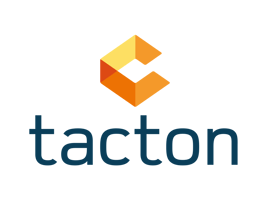I recently came across an article (link) discussing the implementation of SAP CPQ and the...
Unpacking SAP CPQ vs. Tacton CPQ: A Critical Analysis
In our previous post, we boldly compared SAP CPQ and Tacton CPQ, drawing conclusions that, upon further reflection, deserve a more critical eye.
Why settle for a surface-level comparison when the deeper details reveal so much more?
This follow-up post aims to dissect those initial claims, shed light on potential inaccuracies, and emphasize that our previous post was, indeed, a subjective interpretation of the academic study it referenced. Let’s dive into what really differentiates SAP CPQ from Tacton CPQ and why some of our initial statements might need a second look.
The Hybrid Agile Approach: Not Just a Feature of SAP CPQ
In our initial post, we mentioned that SAP CPQ provides a hybrid agile approach to implementation. However, this statement oversimplifies the nature of agile methodologies. The hybrid agile approach is a project management strategy adopted by specific organizations, such as T-Systems during their SAP CPQ implementation. It’s not an inherent feature of SAP CPQ itself. This nuance is crucial; it’s the methodology and flexibility of the implementing team that often determines the success of such projects, not just the software.
Standard Delivery Elements: Context Matters
Our claim that the number of Standard Delivery Elements was reduced from over 600 to approximately 30 might have seemed impressive, but it’s context-specific. This reduction was an outcome of T-Systems' specific implementation project with SAP CPQ. Such results are not universally applicable across all SAP CPQ implementations. Different organizations will have varying degrees of complexity and standardization needs, which means similar reductions might not be achievable or even necessary for everyone.
Complexity and Customization: A Misleading Comparison
We suggested that Tacton CPQ offers a higher degree of customization compared to SAP CPQ, which supposedly offers more out-of-the-box functionality. This generalization doesn’t hold up under scrutiny. Both Tacton CPQ and SAP CPQ offer extensive customization capabilities. The extent and ease of customization depend heavily on the specific needs of the business and how the software is configured. Simplifying this to a binary comparison does a disservice to the versatility of both platforms.
User Experience: Subjectivity in Simplicity
Our initial assessment praised SAP CPQ for its user-friendly interface, claiming it was easier to navigate than Tacton CPQ. User experience, however, is subjective and can vary widely based on user training and familiarity. Both SAP CPQ and Tacton CPQ are designed to be intuitive and user-friendly, but how a user interacts with these systems will largely depend on their previous experience and the specific configuration of the software.
AI Capabilities: Beyond the Surface
We stated that Tacton CPQ offers extensive AI capabilities while SAP CPQ’s AI features are more limited. This comparison might be overly simplistic. Both platforms utilize AI and machine learning for configuration and recommendation purposes. The capabilities of AI in these systems are constantly evolving, and the extent of their application can vary based on the latest updates and specific business requirements. Therefore, it’s important to look at current, specific capabilities rather than making broad generalizations.
Integration Capabilities: Versatility Misunderstood
Another point that needs clarification is our portrayal of SAP CPQ as being part of a larger suite and Tacton CPQ as a standalone product. While SAP CPQ integrates seamlessly with the SAP suite, Tacton CPQ is designed to work with a wide range of enterprise systems, including ERP and CRM systems. This makes Tacton CPQ incredibly versatile, capable of fitting into various IT ecosystems, not just as a standalone solution but as a robust, integrative component.
Market Fit and Complexity: Nuanced Needs
Our assertion that Tacton CPQ is for complex products and SAP CPQ is for simpler, mid-market configurations needs a nuanced understanding. Both systems are highly capable and can handle a wide range of complexities. The suitability of either system depends more on specific business processes and needs rather than an inherent limitation or strength in handling complexity.
As we reflect on our initial post, it’s clear that some of our claims could benefit from further context and clarification. SAP CPQ and Tacton CPQ are both powerful tools with unique strengths, and their effectiveness largely depends on the specific needs of the business and how they are implemented. Understanding these nuances is key to making an informed decision about which CPQ solution is best for your organization.
To provide an objective benchmark, let’s turn to the Gartner Magic Quadrant (link), a trusted industry standard for evaluating software solutions. In the most recent Magic Quadrant for CPQ application suites, Tacton CPQ has been rated higher than SAP CPQ. Tacton CPQ's advanced customization capabilities, strong integration with various enterprise systems, and superior AI-driven configuration processes have earned it a leading position.
Gartner's evaluation highlights Tacton CPQ's strength in handling complex product configurations and its ability to optimize configurations automatically, providing significant value for businesses with intricate needs. This higher rating reflects not only Tacton's technical prowess but also its ability to deliver on its promises across diverse industries, particularly manufacturing.
For a more nuanced comparison and to explore these insights further, revisit our original post (here) and join the conversation about the true strengths and potential of these powerful CPQ systems.
Let’s continue to delve deeper and uncover the real story behind SAP CPQ and Tacton CPQ, leveraging objective benchmarks like the Gartner Magic Quadrant to guide our understanding.





